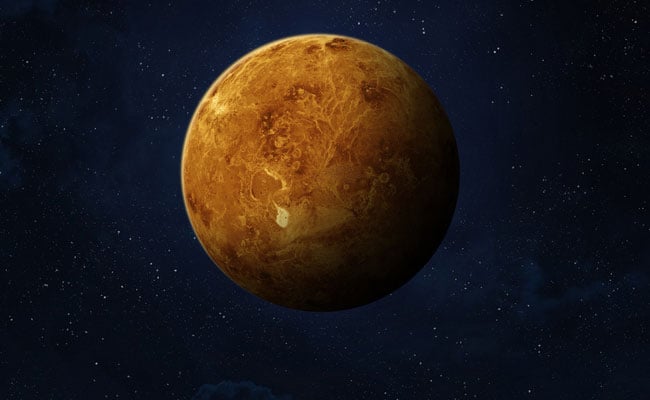
The Union Cabinet has approved space missions totalling Rs 31,772 crores paving the way for the roadmap for the Indian Space Research Organisation (ISRO) till almost 2040.
The Chandrayaan-4 mission; a mission to Venus; and the enhanced Gaganyaan mission to include the Bhartiya Antariksha Station; and the development of the new rocket Soorya all got approval from the Union Cabinet led by Prime Minister Narendra Modi.
The approvals come within 100 days of the third term of the new government.
Speaking to NDTV ISRO Chairman Dr S Somanath said “India’s ambitious space vision and roadmap have now been given the wings to fly high.”
The fabulous four approvals have set ISRO to take India to a higher orbit. India cannot lag in harnessing the benefits of space technology for the aam admi as space technology touches the lives of every Indian. Mr Somnath said, “At ISRO we will ensure that Prime Minister Narendra Modi’s promising planetary vision to rocket India to be a developed nation or Viksit Bharat by 2047 does not falter.”
The government approved the Chandrayaan-4 mission to develop and demonstrate the technologies to come back to Earth after successfully landing on the Moon and also collect moon samples and analyze them on Earth. This Chandrayaan-4 mission will achieve the foundational technologies and capabilities eventually for an Indian landing on the moon (planned by the year 2040) and return safely back to Earth.
Major technologies required for docking/undocking, landing, safe return to Earth and accomplishing lunar sample collection and analysis will be demonstrated. A total of Rs 2,104 crores has been allocated for this multi-stage mission which would be completed in 36 months.
India’s first mission to study Earth’s planetary neighbour, Venus, comes on the back of the highly successful maiden mission to Mars in 2013.
ISRO will now swiftly develop the Venus Orbiter Mission (VOM) which will be a significant step towards the Government’s vision of exploring and studying Venus, beyond the Moon and Mars. Venus, the closest planet to Earth and believed to have formed in conditions similar to Earth, offers a unique opportunity to understand how planetary environments can evolve very differently.
The ‘Venus Orbiter Mission’, accomplished by the Department of Space, is envisaged to orbit a scientific spacecraft in the orbit of planet Venus for a better understanding of the Venusian surface and subsurface, atmospheric processes and influence of the Sun on the Venusian atmosphere.
The study of the underlying causes of the transformation of Venus, which is believed to be once habitable and quite similar to Earth would be an invaluable aid in understanding the evolution of the sister planets, both Venus and Earth. A sum of Rs 1,236 crores for this mission is to be launched in March 2028.
Not forgetting the low earth orbit, the cabinet approved the building of the first unit of the ‘Bharatiya Anatriksh Station’ by extending the scope of the Gaganyaan program. Approval by the cabinet is given for the development of the first module of Bharatiya Antariksh Station (BAS-1) and undertaking missions to demonstrate and validate various technologies for building and operating BAS.
To revise the scope and funding of the Gaganyaan Programme to include new developments for BAS and precursor missions, and additional requirements to meet the ongoing Gaganyaan Programme.
Revision in Gaganyaan Programme to include the scope of development and precursor missions for BAS, and factoring one additional un-crewed mission and additional hardware requirement for the developments of the ongoing Gaganyaan Programme.
Now the human spaceflight program of technology development and demonstration is through eight missions to be completed by December 2028 by launching the first unit of BAS-1.
A total of Rs 20,193 crores has been sanctioned for the Gaganyaan plus the BAS-1 missions with a December 2029 target.
Some of these ambitious goals cannot be achieved with the capabilities of medium-lift launchers like the Launch Vehicle Mark-3 (LMV-3) hence the cabinet approved the development of the Next Generation Launch Vehicle (NGLV), which will be a significant step towards the Government’s vision of establishing and operating the Bharatiya Antariksh Station and towards developing capability for Indian Crewed Landing on the Moon by 2040.
NGLV will have three times the present payload capability with 1.5 times the cost compared to LVM3, and will also have reusability resulting in low-cost access to space and modular green propulsion systems. The NGLV has been named ‘Soorya’ by ISRO. A sum of Rs 8,239 crores has been allocated for the development of Soorya which will be completed in 96 months.
The goals of the Indian space programme require a new generation of human-rated launch vehicles with high payload capability and reusability. Hence, the development of the Next Generation Launch Vehicle (NGLV) is taken up which is designed to have a maximum payload capability of 30 tonnes to Low Earth Orbit, which also has a reusable first stage.
Currently, India has achieved self-reliance in space transportation systems to launch satellites up to 10 tonnes to Low Earth Orbit (LEO) and 4 tonnes to Geo-Synchronous Transfer Orbit (GTO) through the currently operational launch vehicles.







